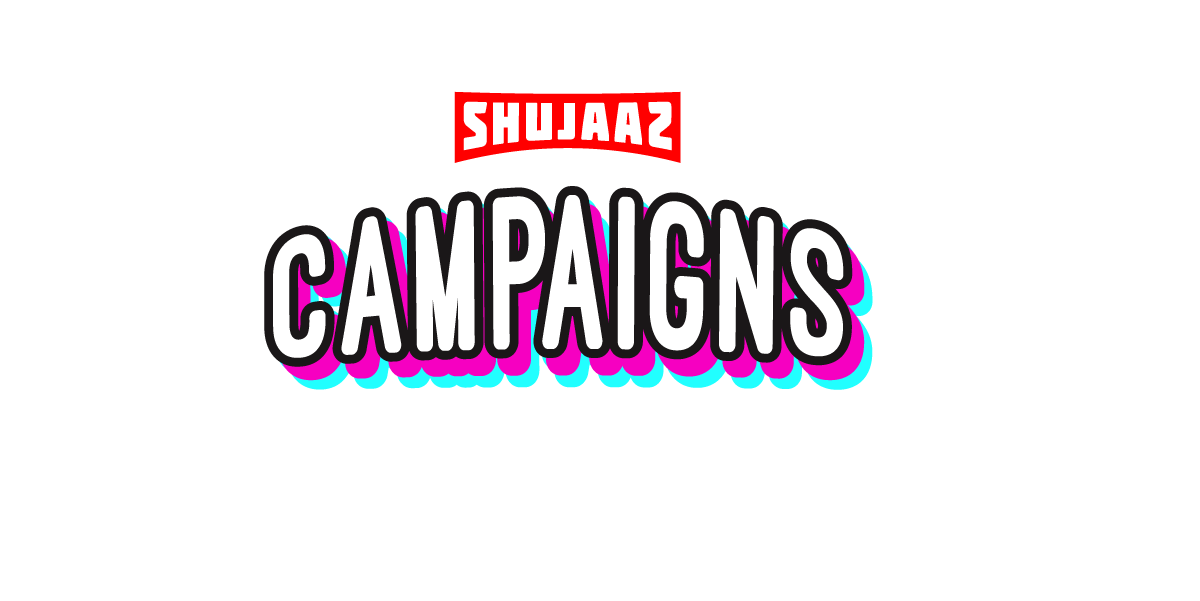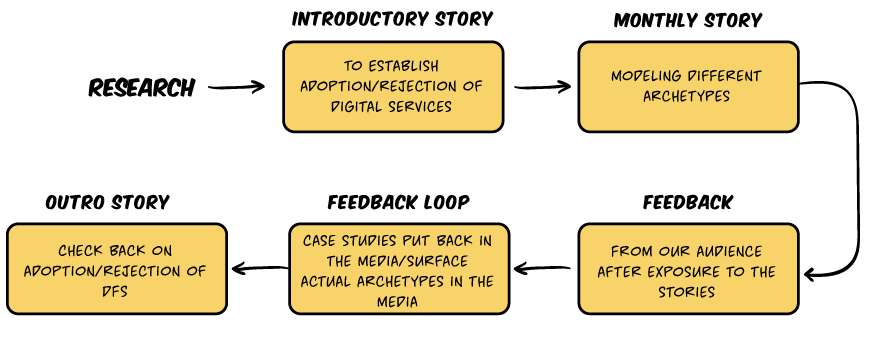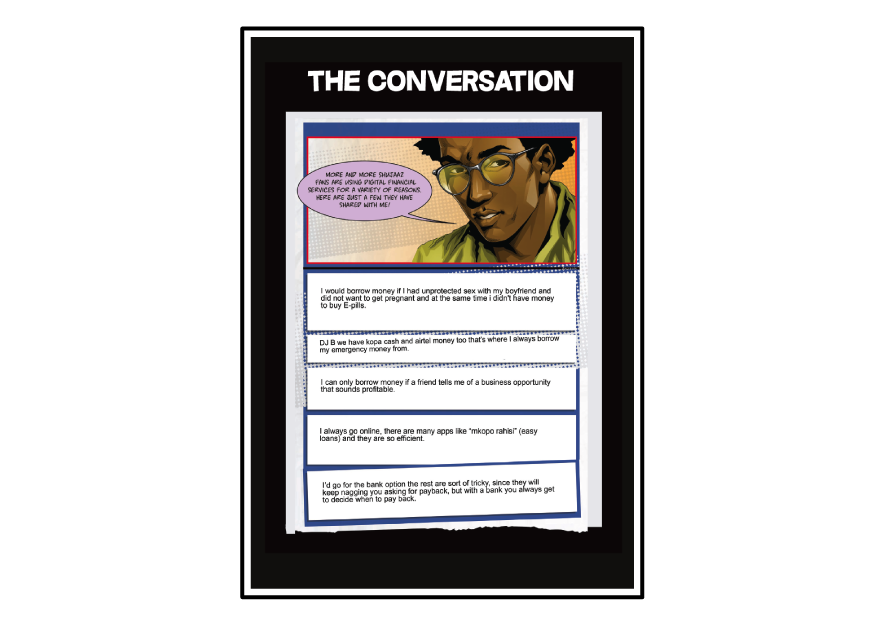Rooted strongly in audience research, Shujaaz’s persuasion campaigns are designed to cause collective discussion, leading to collective belief, leading in turn to collective action. Each campaign is set within our authentic and trustworthy media space, where Shujaaz fans engage with fictional characters and with each other, discuss difficult issues, share ideas, and provide support.
Sexual and Reproductive Health
Our sexual and reproductive health (SRH) strategy focuses upon creating motivation to use contraception to protect one’s improving livelihood—Shujaaz builds financial and business skills among its fans while explicitly linking financial success to good planning, including planning for marriage and parenthood.
We review each campaign by measuring indicators of success. For the SRH campaign, these indicators include:
- Audience members associating contraceptives with other positive life choices.
- Audience members recommending contraceptives to others.
- Audience members adopting contraceptives and family planning.
- Increased percentage of female audience members who have accessed SRH services during the year.
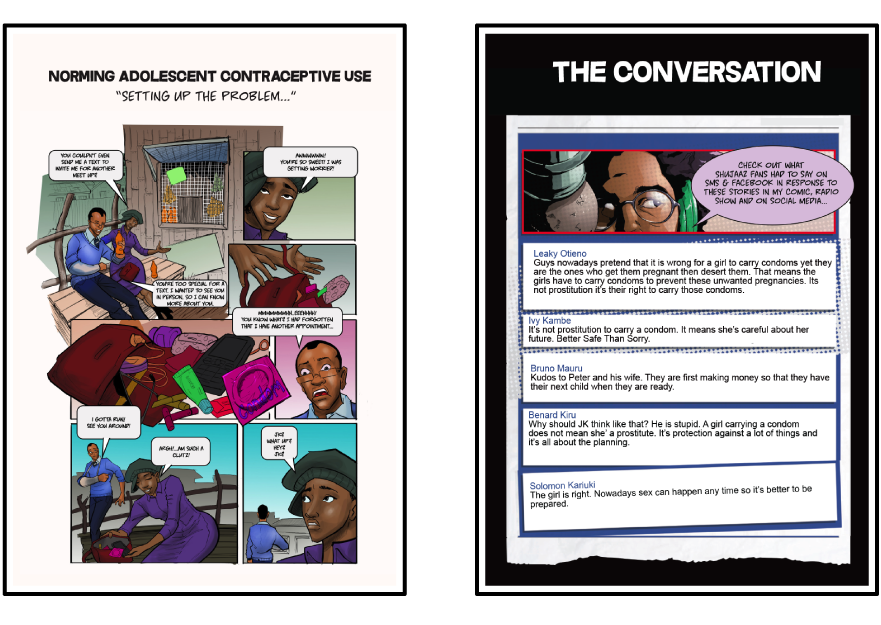
A key component of our SRH campaign in 2013-2015 was the Jongo Love narrative, which started off as a radio drama exploring relationships, gender-based violence, hustling, substance abuse, preventing unplanned pregnancy and the power of contraception to protect one’s plans, dreams and future. The story won us an International Digital Emmy Award and was so popular that we adapted it into a 13-episode TV drama with the support of the Bill and Melinda Gates Foundation. We then re-edited the episodes into a feature-length movie which gained over 100,000 views on YouTube within three weeks of its release. The film also screened in cinemas and was distributed via thousands of DVDs to video dens across Kenya.
Shot on a mobile phone on location in Kisumu and the Mathare slums of Nairobi, the realistic drama addressed socio-cultural barriers and myths about contraception and empowered young people to seek quality information and family-planning services from qualified health personnel.
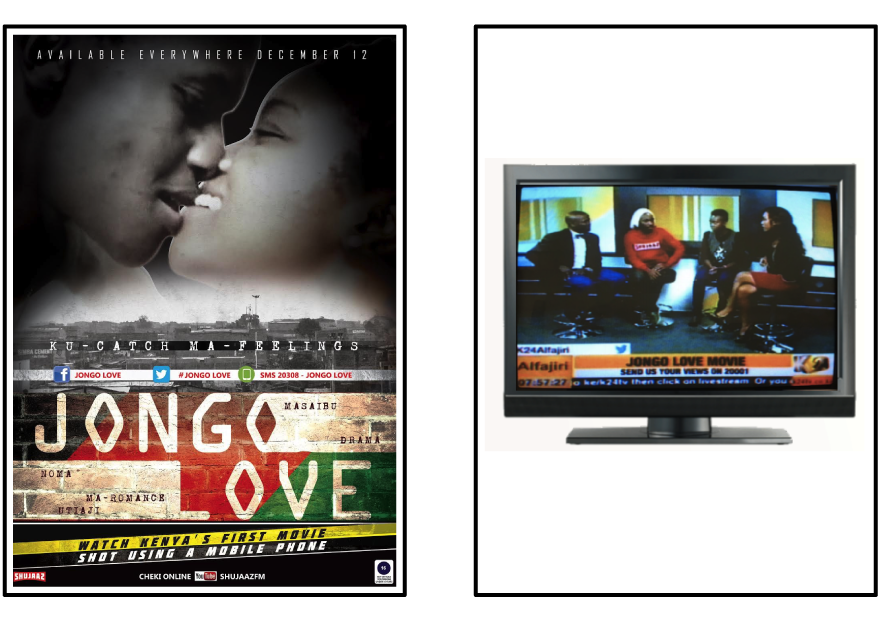
Tobacco Control
Our tobacco campaign has a different type of starting point: it isn’t intended to trigger a behaviour change but rather to sustain behaviour at the same level. At the time the program began, only around 2% of Kenyans aged 15-24 reported having ever tried a cigarette. The concern, however, was that the East African market had been growing increasingly favorable toward tobacco—from the availability of cigarettes for purchase by piece to endorsement by high-profile celebrities. The main goal was to prevent the rate of smoking from going up; hence, the campaign had to address the issue in a manner that sustained rejection and did not inspire interest and curiosity.
We introduced two new characters to our media landscape: Kinyonyi (male) and Peke Diva (female), two smokers seeking attention and “performing” smoking to mask their inner insecurities. The goal was to expose smoking as a desperate act, and the main ask for the audience was to not get sucked into the performance. To avoid attracting too much attention to the performers, they were not given their own stories but rather appeared as a nuisance and a distraction at peak moments in main character’s stories.
Indicators of success include:
- Audience members using the markers “kinyonyi,” “peke diva” and “beste imbo” (“false friend,” expressing the idea that cigarettes may seem to offer comfort or distraction during a moment of crisis but are not a positive solution).
- Audience members saying they chose the “beste imbo” but that it’s not worth it.
- Audience members sharing how they overcame moments of crisis without the help of cigarettes or other false friends.
- Audience members saying that smoking is not cool.
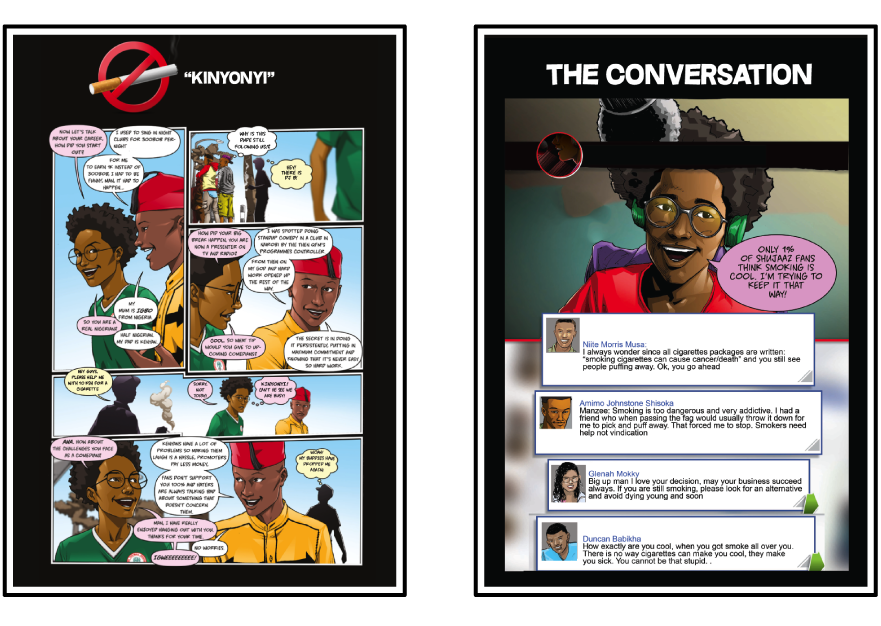
Agriculture Awareness
Shujaaz’s agricultural campaign is centered around helping rural youth live productive and purposeful lives without feeling compelled to migrate to cities. Entrepreneurial opportunity is highly motivational for young Kenyans and Tanzanians: it’s Shujaaz’s most requested recurring topic. But young people lack clear direction for opportunities that are accessible to them in their locations or with their mostly limited investment capital. They also lack the basic task knowledge they needed to succeed.
Our approach is to help re-position rural livelihood options that have been stigmatized by young people as backward or demeaning by:
- Finding and celebrating positive case studies (role models who have found success).
- Broadening audience definitions of agriculture to include the entire value chain.
- Increasing the number of audience members who can identify with new agriculture opportunities and innovations.
Indicators of success include:
- Increased audience engagement with agricultural content.
- Audience members endorsing agriculture as an attractive and profitable hustle.
- Audience members endorsing those who are farming as attractive people (“I’d like to date/hang out with him/her”).
- Audience members starting agricultural jobs.
- Audience members proudly sharing their agri-hustles.
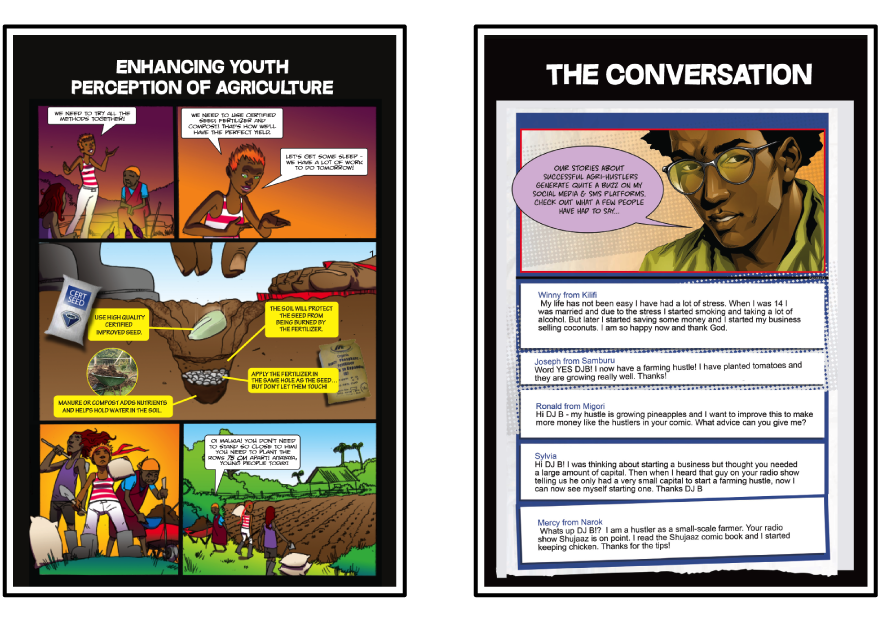
Digital and Financial Services
Our digital financial services campaign started in 2015, after the Bill and Melinda Gates Foundation’s Financial Services for the Poor program asked us to explore:
- Young Kenyans’ views on money and financial services, in order to develop strategies to promote DFS uptake.
- If and how young people could serve as catalysts for DFS adoption by the adults in their lives.
Using GroundTruth methods and a literature review, we zoomed in on five unique archetypesof potential DFS users: a crisis cracker, a rural modernizer, a rural migrant, a secret saver and a smart saver.
Well Told Story designed a nine-month action-research campaign, which started with the story about a crisis cracker, expected to appeal to the entire target audience. It described a situation in which a member of a household fell sick in the middle of the night and the household had to source money to pay hospital fees at the time when all formal and informal resources—except for DFS—were not accessible. A young member of the household proposed taking an instant DFS loan and the advice was accepted by the adults. Shujaaz media followed up with four other archetypal stories, plus a wrap-up story that reiterated the crisis cracker narrative in a slightly different context to check if and how audience attitudes and behaviours had evolved.

Indicators of success include:
- People sharing their stories on how they cracked or helped to crack a financial crisis at one point or another.
- Audience members sharing anecdotes of how they have helped or influenced elder people to adopt digital financial services.
- Summary: Shujaaz’s Sex Strategy.
- Report: “Kenyan Boys, Girls and Contraceptives (Part I).” September 2016.
- Report: “Quarterly campaign reviews: Governance, Sex and Money, Norming Contraception." September 2017
- Blog post: “Award-winning Jongo Love Engages Kenyan Youth Through Multiple Media Channels.” November 3, 2013.
- Blog post: “A Movie Film on a Mobile: Jongo Love is All About Possibility.” December 21, 2015.
- Blog post: “#Shujaaz360: How do we make agriculture sexy and fun?” May 17, 2016.
- Blog post: “Tanzanian youth: There may be money in agriculture, but there is no dignity.” June 21, 2016.
- “Case Study 1: Money and Digital Financial Services.”
- Report: “#PesaPersonas: The Money Matters: Youth, Money and DFS: Findings and lessons from an action research project.” January 19, 2017.
- Report: “Youth and Mobile Money: A Report on the State of Digital Financial Services in the Kenyan Youth Market.” January 2017.
- Video: “#PesaPersonas.” January 17, 2017.
